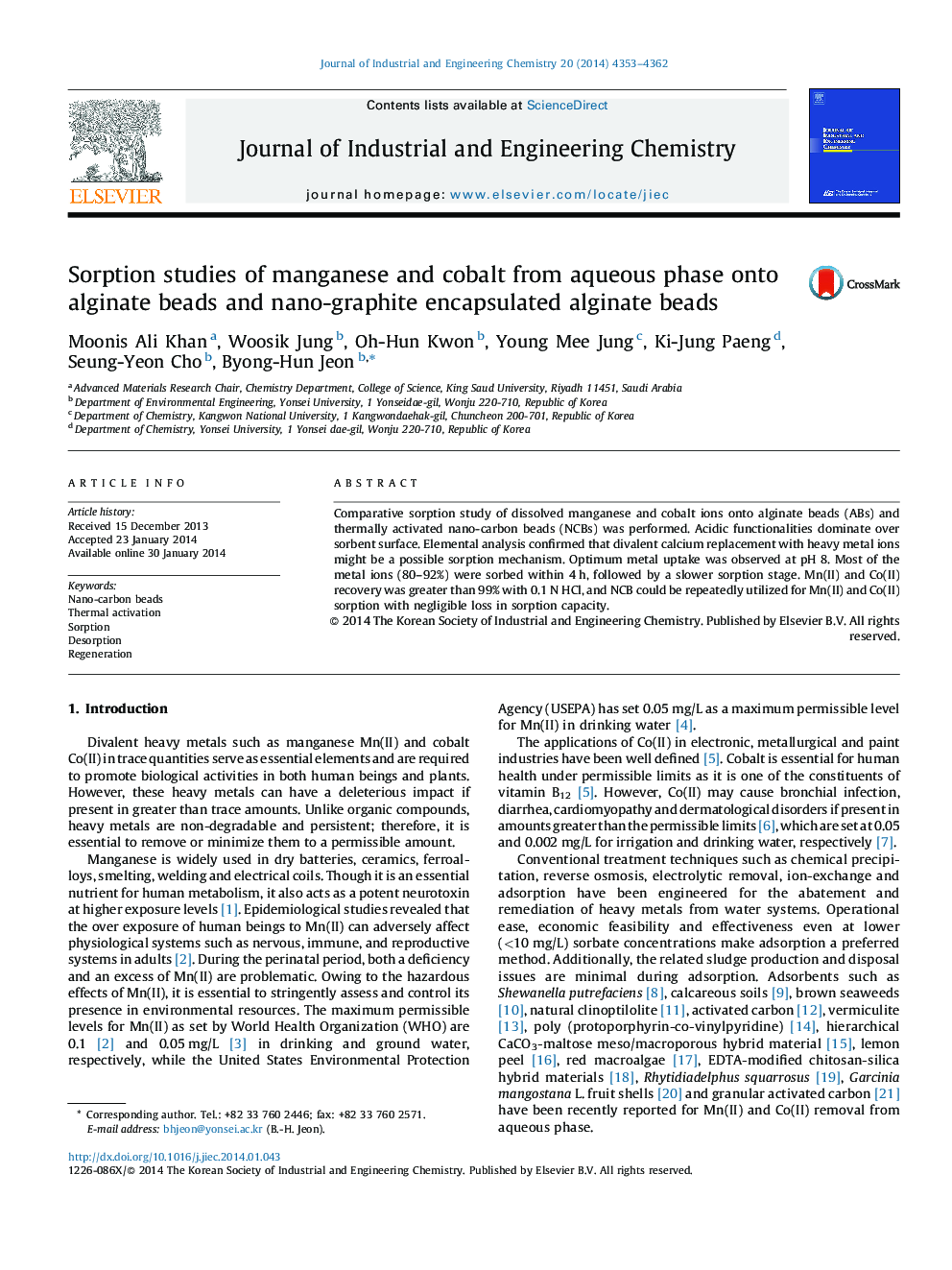| Article ID | Journal | Published Year | Pages | File Type |
|---|---|---|---|---|
| 227571 | Journal of Industrial and Engineering Chemistry | 2014 | 10 Pages |
•Nano-graphite carbon encapsulated alginate beads were thermally activated.•During sorption structural Ca(II) in ABs and NCBs was replaced with metal(II) ions.•Co(II) sorption was higher compared to Mn(II).•80–92% metals sorption was accomplished for initial 4 h.•Regeneration study showed <10% metal sorption loss after five consecutive cycles.
Comparative sorption study of dissolved manganese and cobalt ions onto alginate beads (ABs) and thermally activated nano-carbon beads (NCBs) was performed. Acidic functionalities dominate over sorbent surface. Elemental analysis confirmed that divalent calcium replacement with heavy metal ions might be a possible sorption mechanism. Optimum metal uptake was observed at pH 8. Most of the metal ions (80–92%) were sorbed within 4 h, followed by a slower sorption stage. Mn(II) and Co(II) recovery was greater than 99% with 0.1 N HCl, and NCB could be repeatedly utilized for Mn(II) and Co(II) sorption with negligible loss in sorption capacity.
Graphical abstractHypothetical mechanism for the replacement of calcium with divalent metal ions.Figure optionsDownload full-size imageDownload as PowerPoint slide
